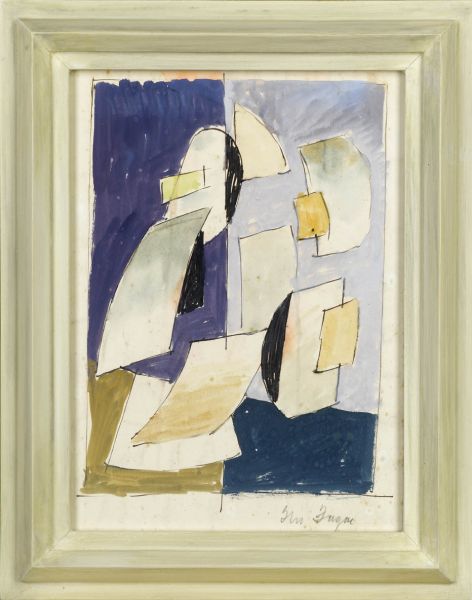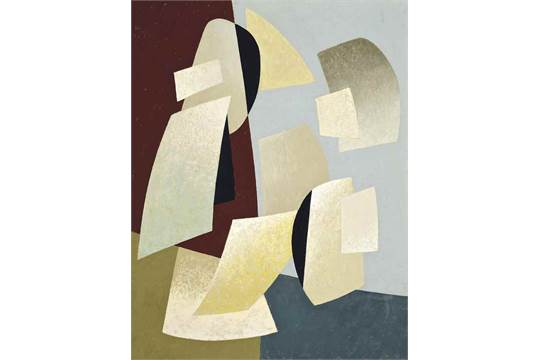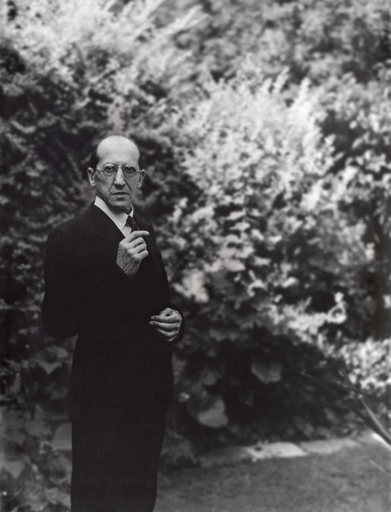

John Cecil Stephenson (1889-1965):
Study for Fugue, 1953
Framed (ref: 3607)
Titled and inscribed in pencil
Gouache and indian ink on paper
10 x 7 1/2 in. (25.4 x 19 cm.)
See all works by John Cecil Stephenson gouache ink pencil architecture design murals
Provenance: The Artist's Estate; Ficher Fine Art Ltd (c 4091)
Exhibited: John Cecil Stephenson - Pioneer of Modernism, DLI Museum & Durham Art Gallery, 25 February - 29 April 2012.
Fugue is a musical term that refers to a contrapuntal compositional technique in two or more voices, built on a subject that is introduced at the beginning at different pitches and which recurs frequently in the course of the composition. A skilled musician himself throughout his life Stephenson' sought to find visual equivalents for musical forms.

Stephenson made his first abstract paintings around 1932. In 1934 he exhibited with the 7 & 5 Society, along with Ben and Winifred Nicholson, Ivon Hitchens, Henry Moore, Barbara Hepworth and John Piper. Though not today as well known as many of his contemporaries he was one of the key figures in the development of abstract art in Britain. Indeed Herbert Reed noted that Stephenson 'was one of the earliest artists in this country to develop a completely abstract style' and credited him with being the father figure of the 'gentle nest of artists' (Ben and Winifred Nicholson, Barbara Hepworth and Henry Moore) who occupied the Mall Studio's in Hampstead. At the beginning of WW2 Calder and Mondrian counted amongst his friends and were frequent visitors to The Mall Studios.

Piet Mondrian photographed in a Hampstead garden by John Cecil Stephenson 1939
Estate of John Cecil Stephenson/Tate Archive
During World War Two, as preparation for larger works (materials being in short supply), Stephenson worked on a series of small studies in oil on card. They were stimulated by the devastation resulting from the bombing of London (also recorded figuratively by Stephenson during this period). In the following decade some of the designs were later realized as larger oils.
 British Murals
British Murals SOLD
SOLD



